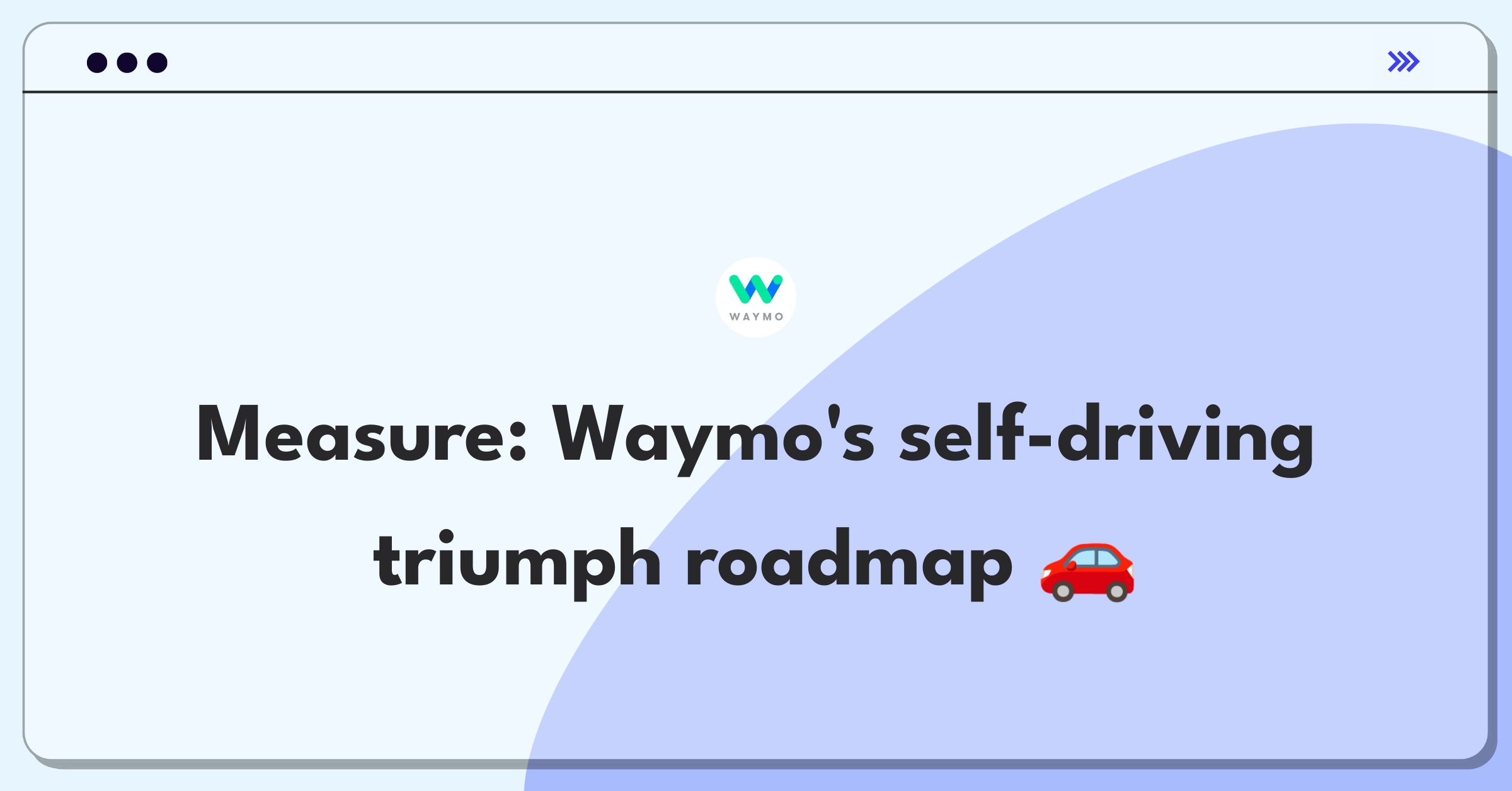Introduction
Measuring the success of Waymo's autonomous driving technology is a complex challenge that requires a multifaceted approach. To effectively evaluate this groundbreaking innovation, we need to consider various stakeholders, technical aspects, and real-world implications. I'll follow a structured framework that covers core metrics, supporting indicators, and risk factors while considering all key stakeholders.
Framework Overview
I'll follow a simple success metrics framework covering product context, success metrics hierarchy.
Step 1
Product Context
Waymo's autonomous driving technology is a sophisticated system that enables vehicles to navigate and operate without human intervention. Key stakeholders include:
- End-users (passengers)
- Regulators and policymakers
- Waymo (as a company)
- Automotive industry partners
- Local communities and governments
The user flow typically involves:
- Requesting a ride through an app
- Vehicle arrival and passenger boarding
- Autonomous journey to the destination
- Safe drop-off and ride completion
This technology fits into Alphabet's broader strategy of leveraging AI and machine learning to solve complex real-world problems. Compared to competitors like Tesla and Uber, Waymo has focused more on full autonomy rather than driver assistance features.
In terms of product lifecycle, Waymo's technology is in the growth stage, having moved beyond initial testing to limited commercial deployment in some areas.
Hardware considerations:
- Sensor suite integration (LiDAR, cameras, radar)
- On-board computing power
- Vehicle modifications for autonomous control
Software aspects:
- AI and machine learning algorithms
- Real-time decision-making systems
- Cloud-based mapping and data processing
Subscribe to access the full answer
Monthly Plan
The perfect plan for PMs who are in the final leg of their interview preparation
$66.00 /month
- Access to 8,000+ PM Questions
- 10 AI resume reviews credits
- Access to company guides
- Basic email support
- Access to community Q&A
Yearly Plan
The ultimate plan for aspiring PMs, SPMs and those preparing for big-tech
- Everything in monthly plan
- Priority queue for AI resume review
- Monthly/Weekly newsletters
- Access to premium features
- Priority response to requested question


.png)